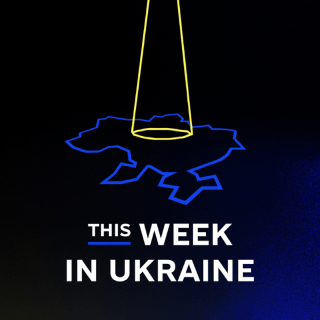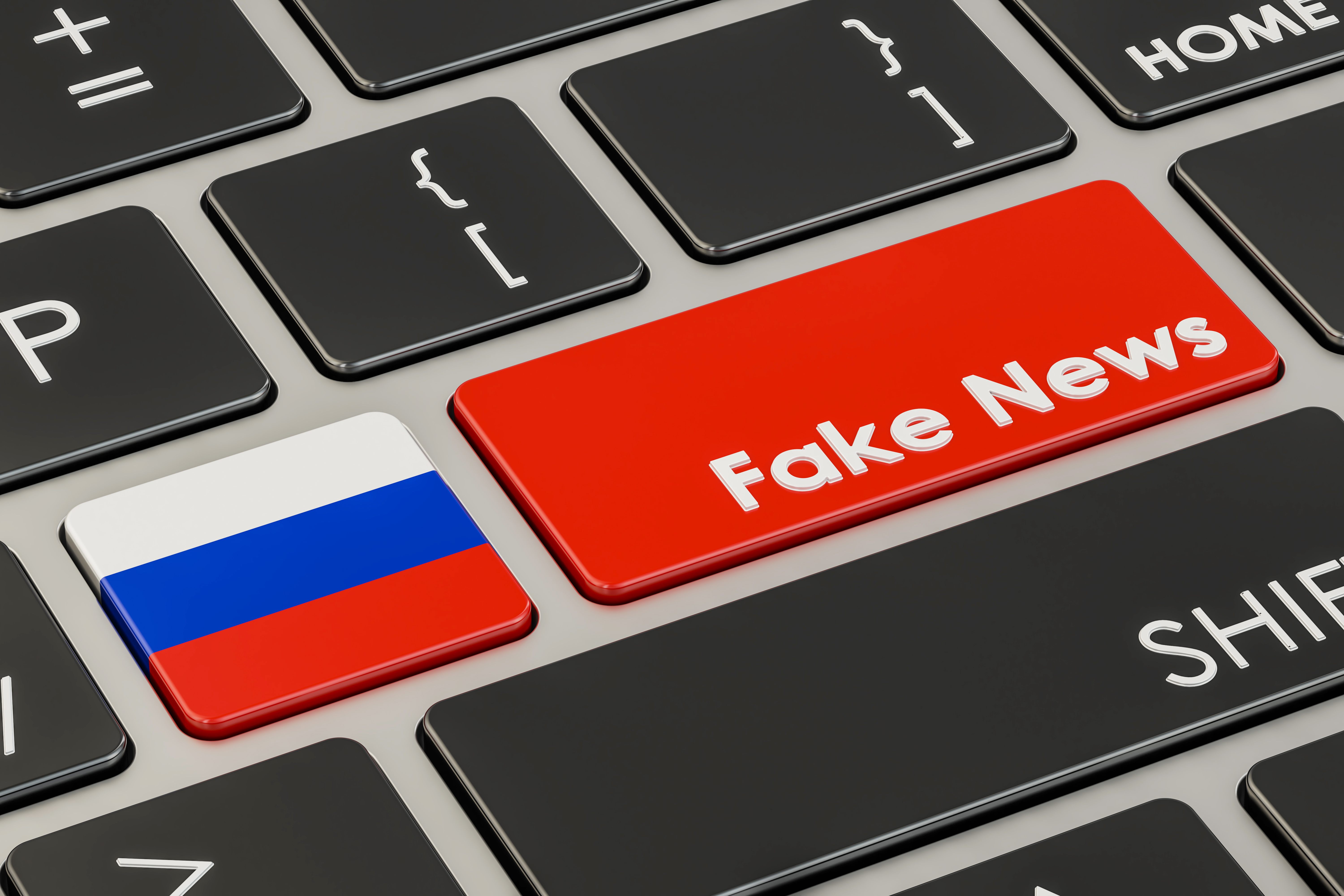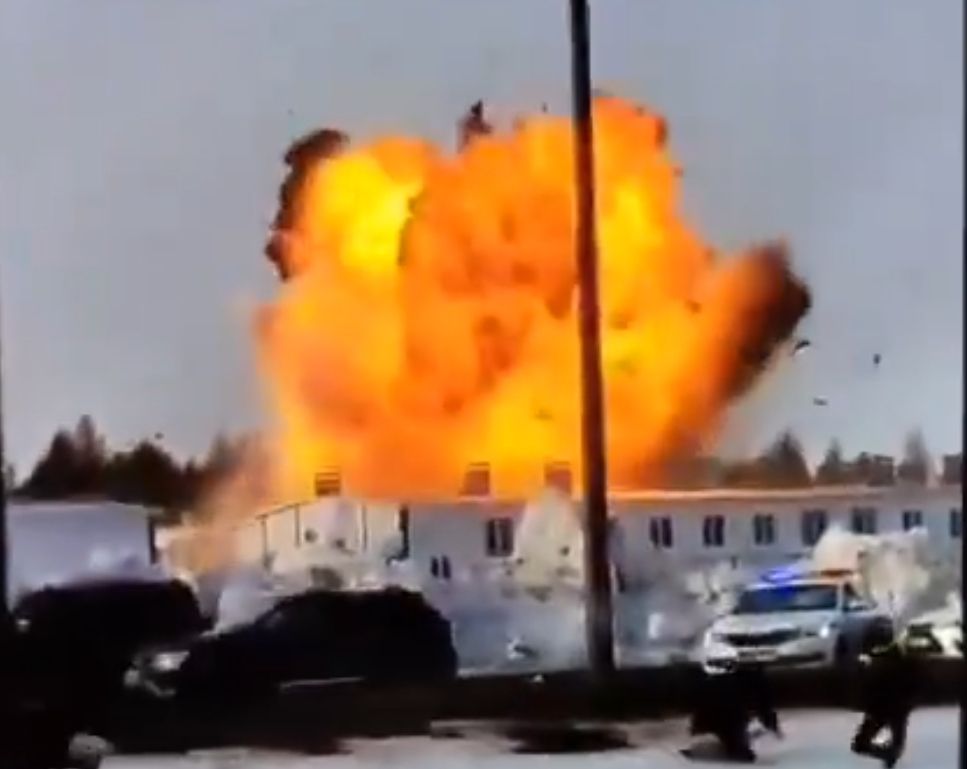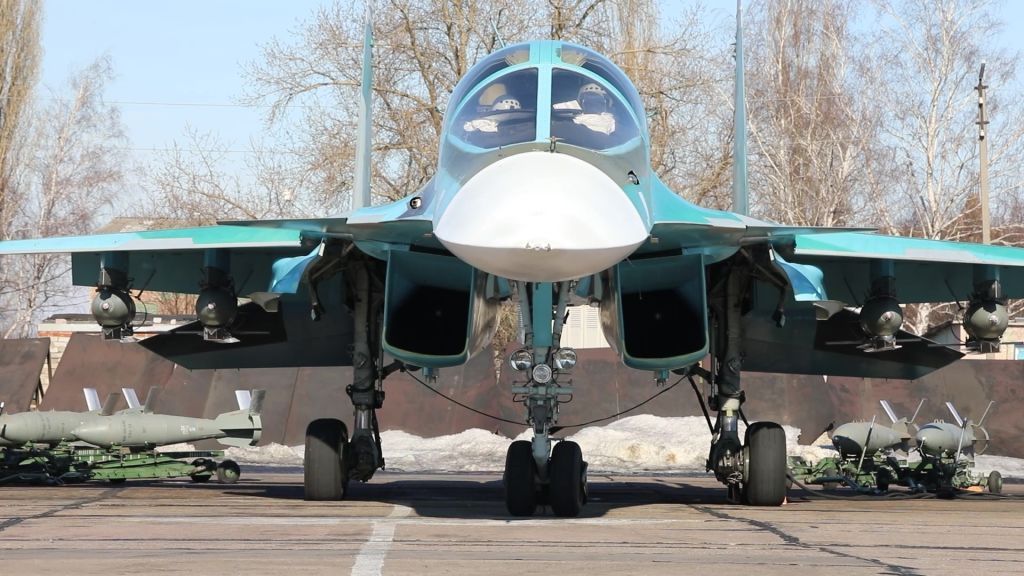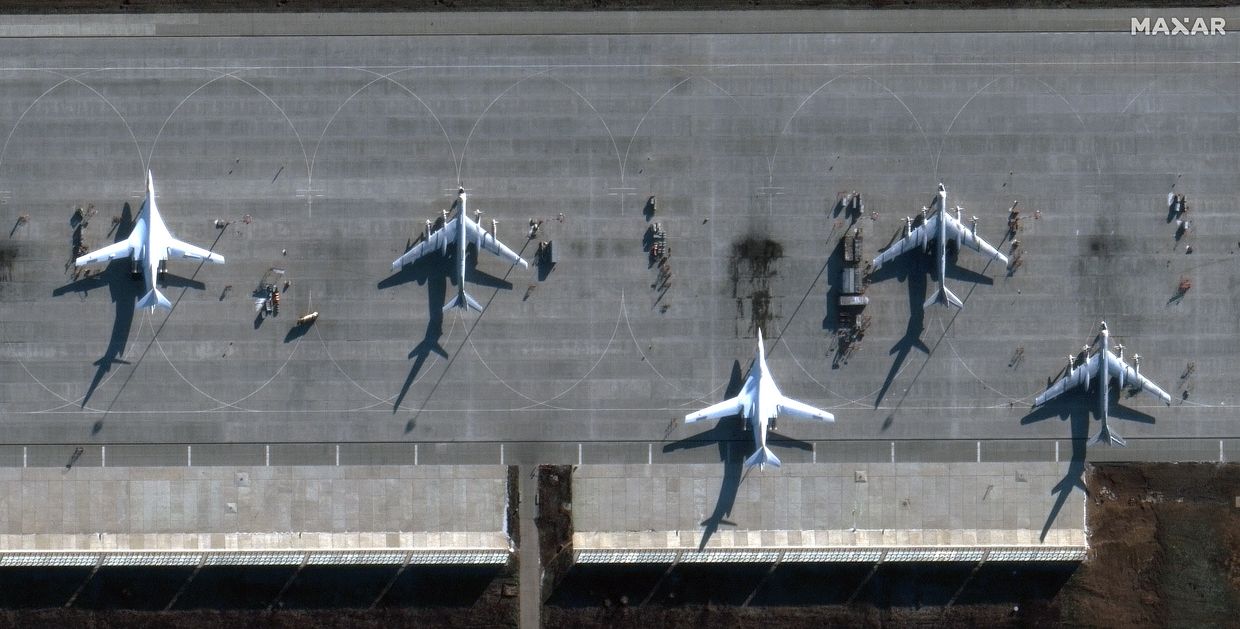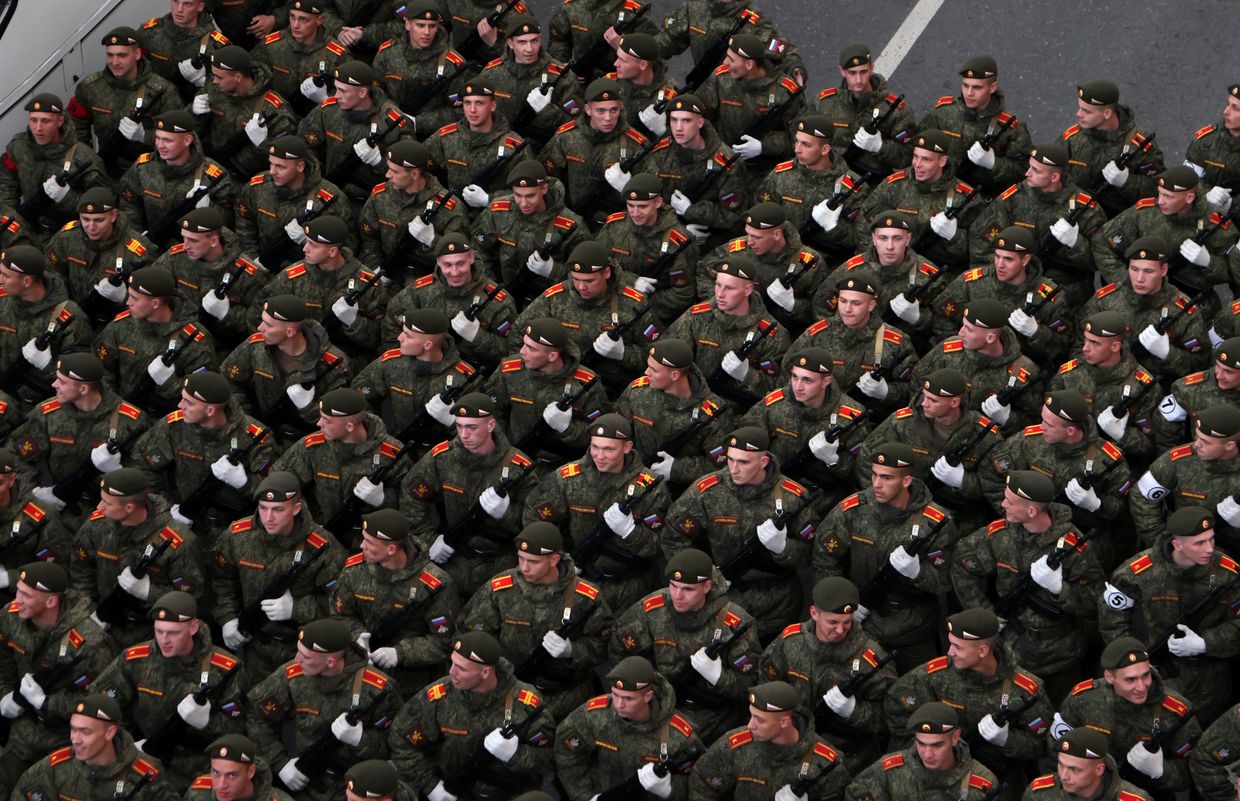Russia has gathered over 100 battalion tactical groups that can strike Ukraine at any moment, according to the U.S.
But part of the attack is already under way and has been going on for many years now.
The true Russian vanguard is disinformation: propaganda, lies, exaggerations and half-truths, artfully assembled to sow discord among Ukrainians, division between Kyiv and the countries that help it and soften the country up for a possible invasion or occupation.
Russian President Vladimir Putin has shown a good example of his tactical use of disinformation by referring to nonexistent “genocide” in the Donbas during his press conference on Feb. 15, which Russia is supposedly trying to defend against.
But the main body of Russian disinformation goes through many interweaving prongs of traditional and social media, which reinforce and amplify one another. Researchers said these have gone into overdrive in the past few months.
Ukrainian culture minister Oleksandr Tkachenko stated on Feb. 16 that so far, this month, the government's Center for Countering Disinformation recorded 60 “disinformation attacks.”
"Russians use information to influence our society,” Tkachenko said.
“It affects us, it really affects us,” said Taras Dzyuba, an academic at the State University of Telecommunications. “Russians rely on a concept called fragmentation of society. If we showed that we are really united, if there’s certainty in the fact that millions of people are united and will resist, certainty of that would hold off aggression.”
Russia’s tactics have been evolving recently, with some prongs focusing on trying to drive a wedge between Ukraine and the countries that are currently pouring money and modern weapons into it while threatening Russia with crippling sanctions.
According to Tkachenko, 90% of the information attacks revolved around the relationship between Ukraine and the West, as well as the economy and health. Only 10% were about parts of Donetsk and Luhansk Oblasts.
As the threat of an attack is high, U.S. intelligence believes that Russia can use its disinformation assets to create a casus belli to attack Ukraine, probably in the form of a false flag attack in Belarus, occupied Donbas or elsewhere.
Divide and conquer
Russia tailors its messages by segment of the population, using politics, religion, geography and other differences to try to divide people, said Dzyuba.
“They are good at fragmenting society,” he said. “They work differently in every region. Fragmentation, sowing panic, this definitely destabilizes the situation and undermines faith in the government.”
The different channels of misinformation are also towards certain audiences. Telegram channels are used more in Ukraine, where more people follow them as opposed to Twitter, where messages are more often aimed towards the West. But these channels, along with Facebook, Youtube, Viber and TikTok often repost and amplify each others’ content. They are usually anonymous.
There is also mainstream media. According to a recent study by Detector Media, a Ukrainian media watchdog, 6.5% of Ukrainians aged 40-49 get their news from Russian TV, along with 5.5% of 50-59-year-olds and 5.7% of people above 60.
A great deal of disinformation within Ukraine has been aimed to make the people disenchanted with the prospect of European integration.
“NATO isn’t waiting for us, NATO will never take us, the EU doesn’t need us, they won’t accept us, why waste time and energy on implementing their standards? Let’s have something of our own or resume cooperation with Russia,” summarized Alexander Kurban, who monitors disinformation with Against Manipulation & Propaganda Messages (AM&PM).
This also means actively pumping up the visibility of news stories, such as when Foreign Minister Dmytro Kuleba was quoted that Ukraine doesn’t trust all of the West’s promises or when U.S. President Joe Biden said Ukraine is unlikely to join NATO very soon.
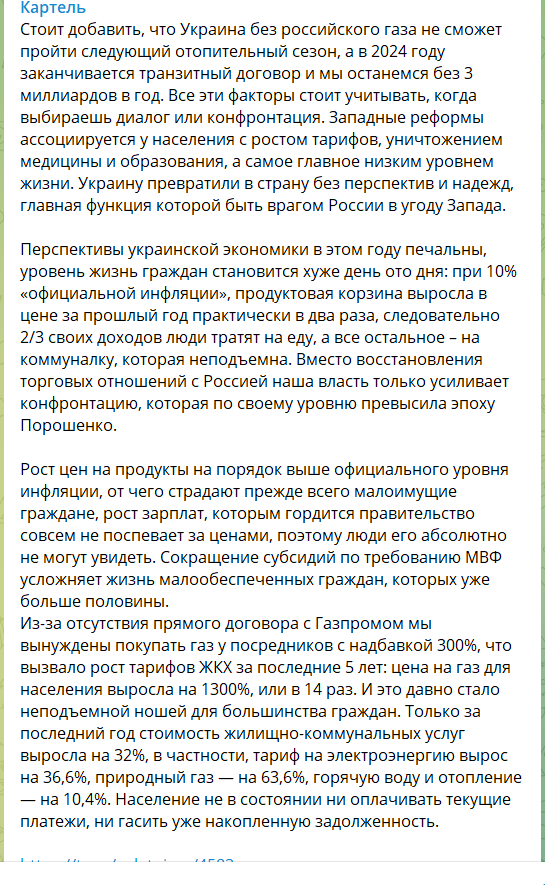
Attempts to stoke nostalgia for the USSR are also a tactic, since Russia positions itself as the inheritor of the USSR and everything that was good about it, such as cheap goods or the heroism of Soviet forces during World War 2, known as The Great Patriotic War in Russia.
Meanwhile, other narratives try to make the West fed up with Ukraine by portraying the country as an irredeemable failed state, hopelessly mired in corruption. While Ukraine is known to suffer from significant corruption, Russia’s campaigns amplify this aspect and make it the country’s defining trait, researchers said.
Evolving tactics
Russia is sophisticated at information warfare and its tactics have evolved over the years, people who study it told the Kyiv Independent.
It also became more decentralized yet better coordinated.
“This army is not vertically integrated. It’s made of different units,” said Kurban. “There are farms of the FSB, foreign intelligence using automated ones, private bot farms, ones run by political parties, public organizations, the Ministry of Defense… There are independent ones, since each oligarch has their own media, defense force and propaganda, like a feudal lord.”
These are shuffled around and connected to the Kremlin’s main disinformation effort as the situation demands, he said.
“Coordination improved a lot. There’s structure – units that develop these algorithms on the basis of neural networks and AI,” said Dzyuba. He said that contradictions between information put out by the different branches have decreased drastically.
It also means Russian media is much faster at picking up various unverified reports published on a plethora of Telegram channels active in Ukraine that are suspected by the Security Service of Ukraine (SBU) of being run by Russia or the self-declared “Republics” of occupied Donbas.
These often publish first, get picked up by Russian media, then blown up around the internet on Facebook and other social media.
It’s very easy to create an anonymous Telegram news channel with 100-200 followers. “Information is thrown in there and in half an hour, that information is on Russia Today,” said Dzyuba,
But there have been more recent evolutions, visible in the past several months since the latest military buildup began.
One of these is that “there’s been more talk about Ukraine as a failed state,” said Ksenia Illyuk, of Detector Media.
She went on to say that a favored recent subject is gossip about the office of President Volodymyr Zelensky. The other recent development is the use of very detailed information in such reports, whether or not said details are actually true.
A majority use a technique where they present the news “as an opinion or something somebody told them,” Illyuk said. “It doesn’t have to be proven.”
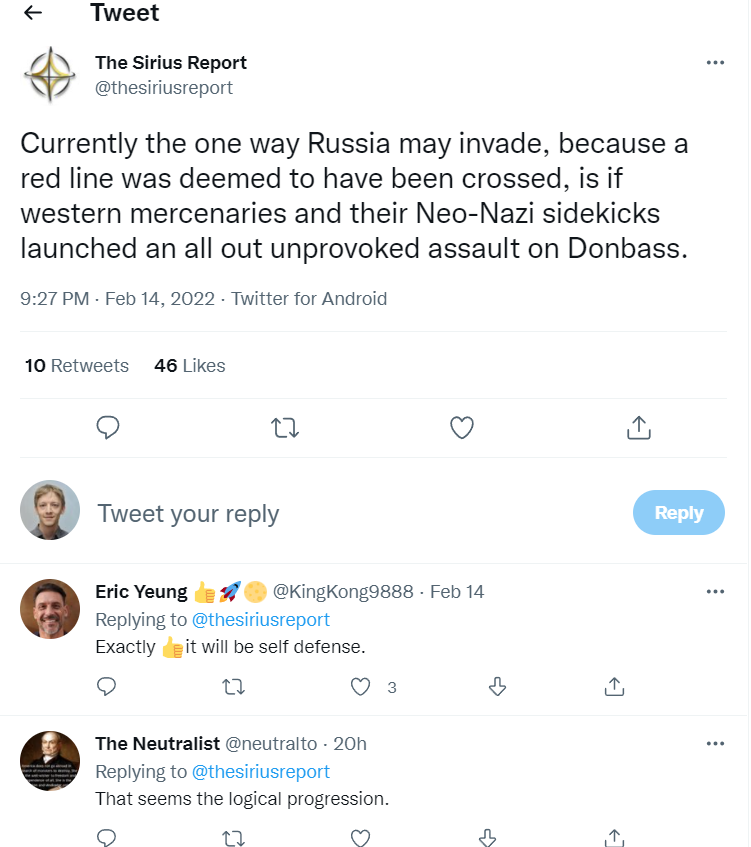
It’s more challenging to run disinformation campaigns on Facebook. While Russia was still the platform's number one source of disinformation in 2021, according to the company’s own study earlier in the year, Facebook can and has taken down accounts suspected of being bots used by Russia. It's much harder to eliminate Telegram channels.
But the propagandists are adapting to that as well. Algorithms that can red-flag text are relatively sophisticated. Not so with image recognition algorithms, which turn pictures to text. As a result, Russian bots use screenshots from Viber or other channels, making it harder to automatically detect disinformation.
There is a great deal of cross-pollination, with channels sharing and resharing each others’ posts, including channels of well known people like the blogger Anatoliy Shariy and a number of anonymous channels.
Last year, the SBU reported that it exposed a large network run by the 85th Main Special Service Center of the General Staff of the Russian Federation Armed Forces, also known as Unit 26165.
This included popular Telegram channels Legitimny, Resident, Cartel, Spletnitsa, Chorniy Kvartal, Politicheskiy Rasklad, Netipichnoye Zaporozhye, Trempel Kharkiv, Odesskiy fraer, Dnepr live, Nikolayev live and Kherson live. Most of them have dozens of thousands of followers. They are still active.
Undermining foreign support with Twitter
Twitter is widely used to amplify news aimed towards a Western audience. Mythos Labs, which uses AI tools to study Russian bot posting patterns, said that Russian bot activity on Twitter jumped by 3,270% from November to December. Mythos Labs is now working on analyzing data for January.
English language propaganda content overtook Russian language content in December. The shift means that now the main target of disinformation about Ukraine is the West – and the international audience.

“Based on the kind of narratives they spread, we can conclude that the main aim of this activity is to undermine international support for Ukraine,” said Olga Tokariuk, a Ukrainian expert who is helping Mythos Labs with the project.
Most Twitter accounts retweet others and don’t write original content. Some do, while many spam replies to make sure some viral tweet gets more views.
There were several other changes, with the kind of narratives used as well as what they amplify. In November, narratives centered on Ukraine’s supposed plans and actions to launch a military offensive in Donbas against the civilian population, as well as Ukraine’s army supposedly being demoralized, that it wouldn’t fight if there’s another war. In fact, Ukraine never planned any such offensive and military morale is high.

November also saw the narrative that Ukraine is a failed state and that it’s full of extreme right wingers. There were also tweets sowing confusion by reporting false news.
But in December, these accounts began mostly amplifying tweets to undermine U.S. support for Ukraine.
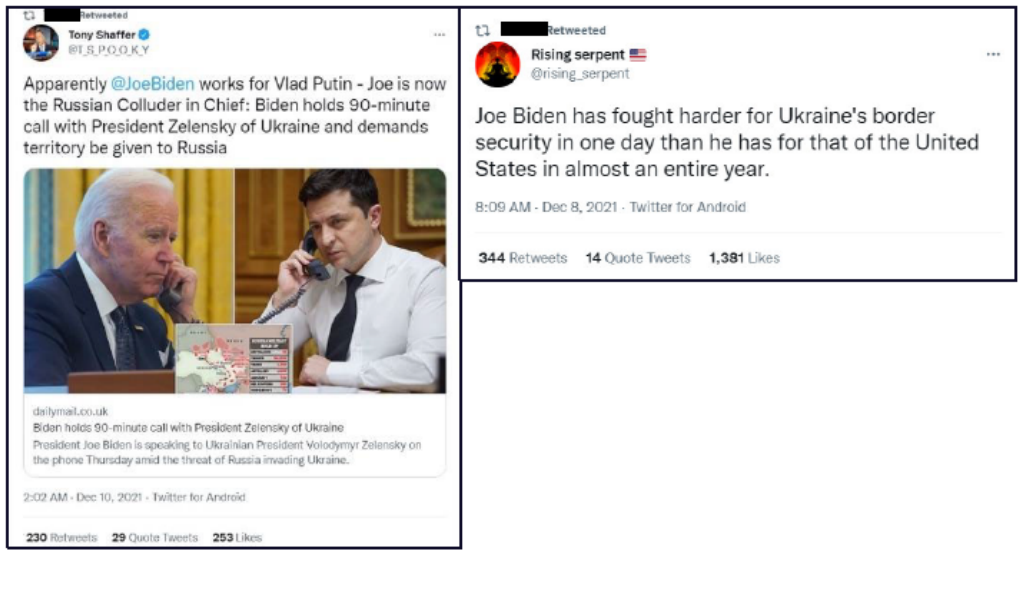
“One of most popular recurring narratives is that the US should focus instead on the situation on the U.S.-Mexico border instead of focusing on the situation on the Ukrainian-Russian border,” said Tokariuk. “Also there was a narrative that Biden should prioritize domestic over international measures.”
She also said there was amplified criticism of the Biden administration, accusing him of not doing enough to protect U.S. interests worldwide.
The U.S. wasn’t the only country targeted. Turkey and India got Twitter activity promoting the message that they should stay out of the conflict and not support Ukraine or support Russia.


